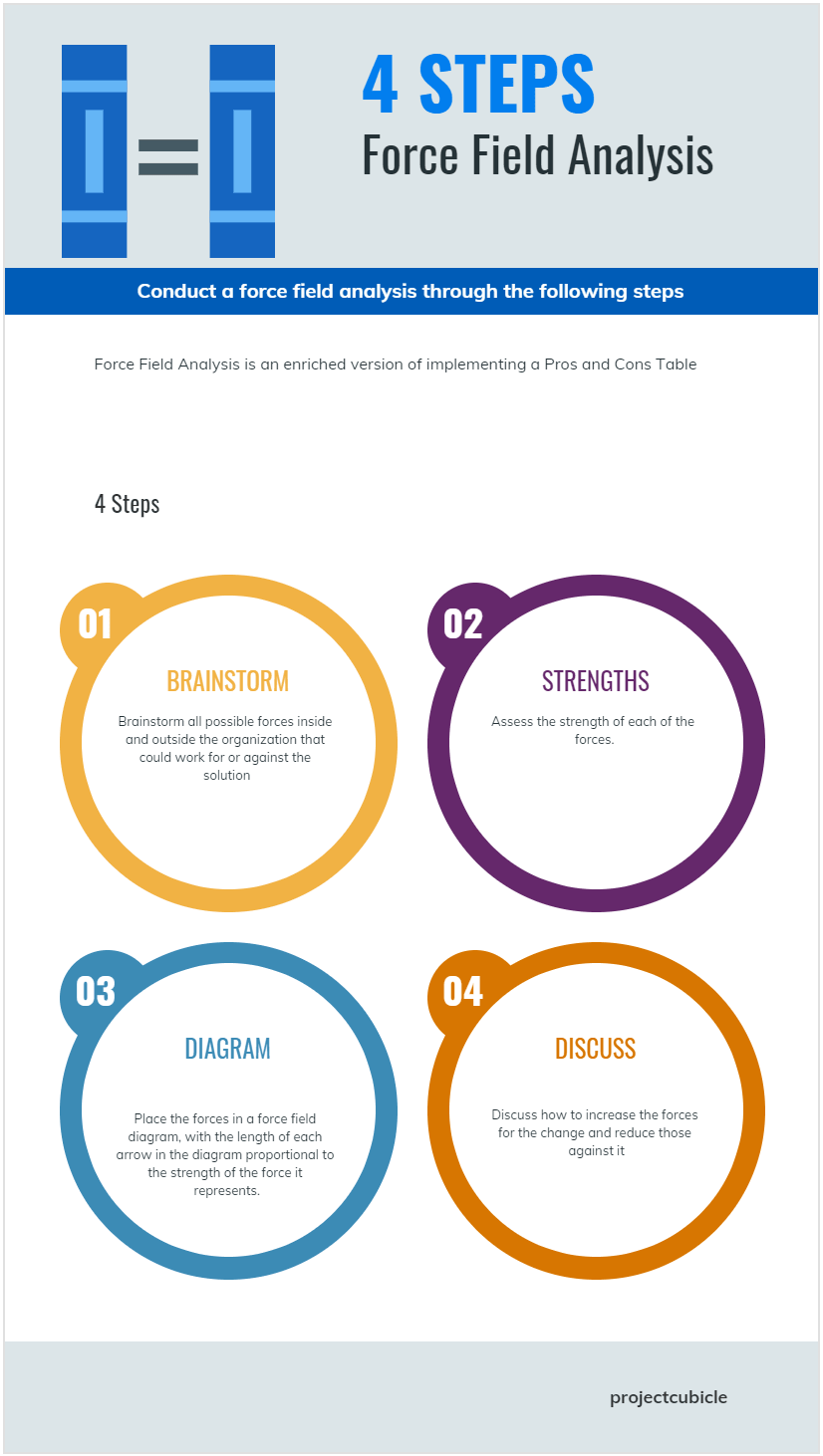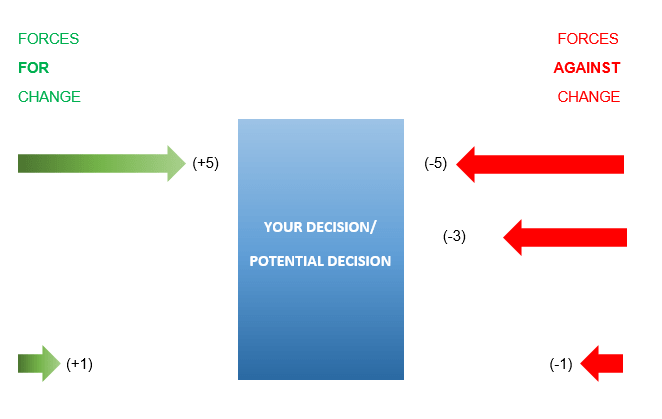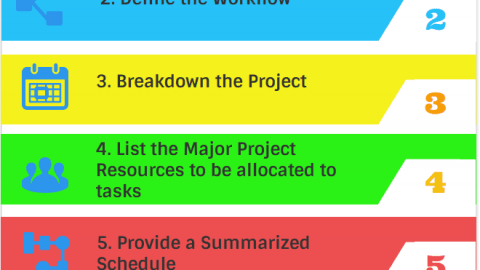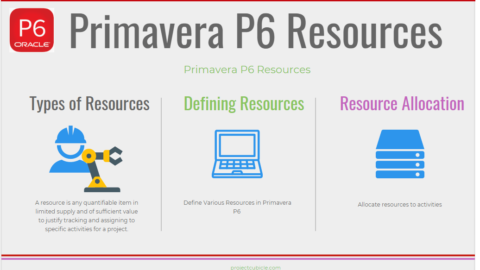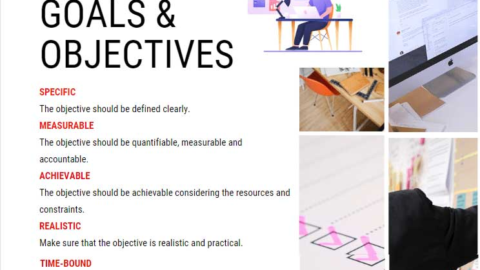Force Field Analysis: A Tool For Decision Making
What is Lewin’s Force Field Analysis? What is How to conduct Horizontal and Vertical Force Field Analysis (FFA)? What is the Definition of Force Field Analysis? What is the improved version of drawing a Pros and Cons Chart? How can Force Field Analysis help you make a decision?
Table of Contents
Brilliant, daring, and complex problems can only be solved by brilliant, daring, and complex people.
Carl Sagan
Dear Reader, Welcome to Project Cubicle for another article. If this is your first article, we’d like to officially Welcome You, now that you are a part of our growing and flourishing Community. We are here to help you thrive in your Business and Personal Growth, as researchers suggest that there is a positive correlation between them!
In this article, we are going to dive deep into a technique that you can utilize in your both Business and Daily Life. You might either be in a massive financial crisis or trying to decide on a perfect dish for your new foreign partners, this technique will help you make that final decision for the best possible outcome. However, the Key Point in using this technique is to be Objective and Stay Objective as much as possible. If it’s your own business, or if you have a strong commitment towards your business, it may be sometimes uneasy to evaluate the actual circumstances rather than the intended business plan.
Before we get to it, I’d like to explain the reason of the selected quote above. Business, similar to life, has complex dynamics and therefore may be wired in ways that we have trouble to understand. Sometimes, A might not be equal to B in Business, sometimes we find trouble in finding both A and B. Then a person comes in and looks upside down, sees the situation from a brand-new perspective, ultimately leading to an infamous-to-be solution. A Unique Technique.
Embracing multiple perspectives in Business Field may help you view the situation more widely, with deeper comprehension and real roots of the problem that has occurred in the Organization, Team, or Project/Task.
Lewin’s Force Field Analysis Definition
Before discussing the definition of Force Field Analysis, let’s talk about the origins. To, shortly, understand the person we are exploring the mindset of, Kurt Lewin (1890 – 1947) was an American Expert in the field of Social Psychology. He thematized the concept of Continuous and Constant Adaptation in Business Environment and argued, like Whitmore in his GROW Model, Change and Flexibility were absolute musts for the sustainability of businesses.
We can simply think of Force Field Analysis, as an enriched version of implementing a Pros and Cons Table. Moreover, performing a Force Field Analysis can resemble calculating the net force in a system. In Physics, a Dot is used to represent the entire system and then the forces are drawn as vectors, arrows, in the way the force is applied to the system (i.e., we always draw Gravitational Force, Gravity pointing downwards.)
Think about Your Business as the System, not a Dot but a Straight Line instead.
Why Should You Use Force Field Analysis (FFA)?
Lewin’s Force Field Analysis can help you foresee the potential outcomes when you are planning an Organizational Change.
Change. It’s a heavy word. And it’s quite difficult to achieve. We have thoroughly explored the concept of Change in our article while discussing Whitmore’s GROW Model.
Force Field Analysis is a decipher of these potential outcomes. Conducting a Force Field Analysis (FFA) might indicate the risks you wouldn’t be able to predict from your own perspective, but from a Bird’s Eye.
While making an important, and crucial, decision that is going to determine the Future of Your Business, you may consider performing a Force Field Analysis.
Why?
Because seeing the big picture, and from not your own perspective, but an objective one is difficult. You may not succeed on your own, and as humans we naturally have a mindset with bias. This bias may lead to impartial judgment. It can be both negative or positive, meaning you may be harsh on your performance and therefore be led to think that you are completely failing at your task, and in the opposite when you are having trouble with your deadlines and the organization’s required punctuality, you may think that it’s all running smoothly but the Team Manager might be few seconds away from asking you to leave the Team.
At that point, as we just mentioned, you have to get yourself out from your current position as You and assume that you hopped on a rocket. Now you must be objective and honest to yourself.
What is, really, happening down there?
What is the Intended Change?
Consider each department individually.
Who will be affected and How? For How Long?
Will there be any Disruptions in their Work Cycle?
Will their Current Tasks/Projects be impacted or interrupted?
Now, we are ready to begin.
KNOW-HOW
There are 2 Methods to Conduct a Force Field Analysis (FFA). Both includes drawing a Straight Line to Represent the Current Circumstances of Your Organization, however one of them is vertical and the other one is horizontal.
If you liked our Gravity example we discussed in the introduction, you might like the horizontal one more, and if you did not you may proceed with the vertical one.
Horizontal Force Field Analysis
To begin with, Lewin’s Force Field Analysis is based on Collective Power, the net force applied on the entire system. Driving Forces are drawn as arrows that point upwards and are scored with “+” and Restraining Forces are drawn as arrows that point downwards, like our Gravitational Force example, and are multiplied with “-“ during the final calculation that will lead you to the ultimate decision or outcome. You should also think about the impact of each arrow and arrange the length of each one according to its degree of influence and importance.
Example of Horizontal Force Field Analysis
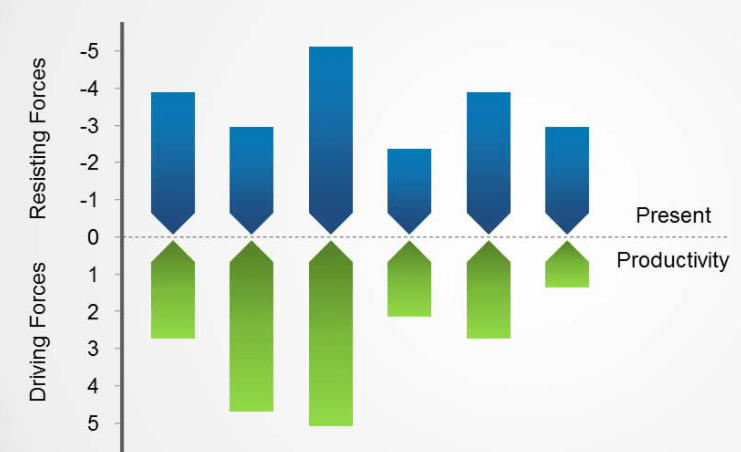
Vertical Force Field Analysis
Once again, our entire situation of the Organization is represented with a Straight Line, however Vertical this time. And similar to performing a Horizontal Force Field Analysis (FFA), Collective Strength determines the potential outcome(s).
If you think that Horizontal version was not applicable for you, try the Vertical! This version resemblances drawing a Pros and Cons chart, for you to relate.
However, this time, the forces are not Driving and Restraining but Internal (Within Your Organization) and External (Outside Your Organization) and are still represented with arrows with length of convenience according to their Importance and Level of Influence.
Example of Vertical Force Field Analysis
Why is Performing a FFA More Efficient Than a Pros and Cons Chart?
No matter how similar FFA to be similar to a Pros and Cons Table, research shows Force Field Analysis to be more inclusive of the Overall Situation. While scoring each objective individually, you also gather applicative information about the Big and Final Picture of the Status of Your Organization and Potential Outcome(s) of a decision you are going to make to the Future of the Company. A Pros and Cons chart may not be adequately balanced and therefore might lead you to end up with a decision that will cause damage to your organization, before leading to any advantages.
Let’s sum up what we have discussed in this article:
We’ve discussed the definition of Force Field Analysis as a decipher of the Current Situation that will help you to see what is, really, happening in Your Organization from a Bird’s Eye.
When you are planning to make a Change or struggling to make a decision, you can use Force Field Analysis to both determine Exterior and Interior; and Driving and Restraining Forces within your organization to help you predict or foresee the potential outcomes if you proceed with that Change or Decision.
Using Force Field Analysis, unlike drawing a Pros and Cons Chart, might improve your Comprehensive Change Strategies and aid you to spot a potential occurring if one of the forces begin to influence more or less than you have intended.
While building your Organizational Dynamic, performing a Force Field Analysis might benefit you in hunting potential obstacles and overcoming them before you encounter them on Your Way to Success!
And with that, that is all we have to say for now about Performing a Force Field Analysis (FFA) as Team Cubicle.
How are you planning to apply FFA in your Field of Business or Organization?
Do you think this technique can still be improved? How?
Let us know!

